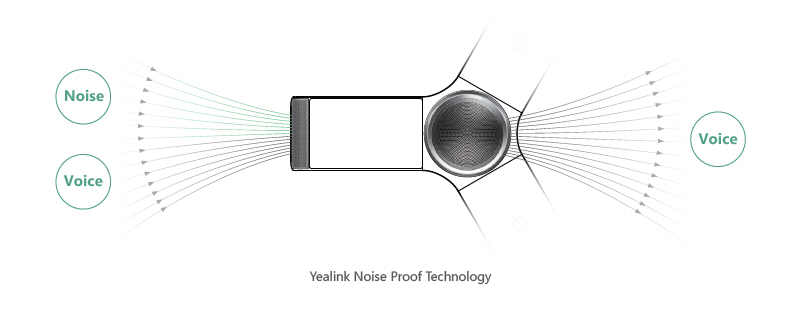Introduction
In today’s fast-paced digital world, communication is paramount for any business. Traditional telephony systems are gradually being replaced by modern solutions that offer flexibility, cost savings, and enhanced features. One of the most significant advancements in this area is the transition from hardware-based Private Branch Exchange (PBX) systems to Voice over Internet Protocol (VoIP) technology. This article delves deeply into From Hardware to Software: The Transition from PBX to VoIP, exploring its implications, benefits, challenges, and everything else businesses need to know.
Understanding PBX: The Old Guard of Telephony
What is a PBX System?
A Private Branch Exchange (PBX) system is a private telephone network used within an organization. It allows employees to communicate internally and externally using various communication channels such as voice, fax, and data.
How Does PBX Work?
In simple terms, a PBX connects multiple telephone lines in a building or organization to facilitate internal calling without incurring external phone charges. It typically includes:
- Multiple phone lines: To allow several calls simultaneously. Switching equipment: To route calls between users. Voicemail systems: For missed calls.
The Limitations of Traditional PBX Systems
While traditional PBX systems were revolutionary in their time, they come with several limitations:
High Costs: Installation and maintenance can be expensive. Limited Scalability: Adding new lines requires physical infrastructure changes. Geographical Restrictions: Typically bound to specific locations.What is VoIP? A Game Changer in Communication
Understanding VoIP Technology
Voice over Internet Protocol (VoIP) refers to the technology that allows voice communication over the internet instead of traditional telephone lines. By converting voice signals into digital packets, VoIP offers numerous advantages over conventional telephony systems.
How Does VoIP Work?
VoIP works by transmitting your voice through the internet in real-time using packet-switched networks. This involves:
Digitizing Voice Signals: Your voice is converted into data packets. Transmitting Data: These packets are sent over the internet. Reassembling at Destination: At the recipient's end, the packets are reassembled into audible sound.Comparing PBX and VoIP Systems
Cost Analysis
| Feature | Traditional PBX | VoIP Phone Systems | |-------------------------------|-----------------|--------------------| | Initial Setup Cost | High | Lower | | Monthly Operating Costs | Moderate | Significantly Lower| | Maintenance Costs | High | Minimal |
Scalability Comparison
- PBX: Scaling up requires additional hardware and installation costs. VoIP: Easily scalable; simply add more users via software settings.
The Benefits of Transitioning from PBX to VoIP
Cost Efficiency
One of the most compelling reasons businesses make the switch is cost-efficiency. With lower initial setup costs and reduced monthly https://soundcurve.com/voip-phone-service-encino-ca/ expenses due to fewer physical infrastructures needed, companies can save significantly.
Enhanced Features
VoIP phone systems come packed with features that traditional PBX can only dream of:
- Video conferencing Call forwarding Integration with CRM tools Advanced voicemail options
Improved Flexibility and Mobility
Employees can work from anywhere with an internet connection using VoIP phones or applications on their smartphones or laptops. This flexibility supports remote work trends that have gained traction recently.
Challenges in Making the Transition
Initial Learning Curve
Transitioning from a familiar system like PBX to something as versatile as VoIP can present challenges for employees who may not be tech-savvy.
Dependence on Internet Connectivity
VoIP relies entirely on your internet connection; thus, poor connectivity can affect call quality.
From Hardware to Software: The Transition from PBX to VoIP
As we move towards a software-centric world, it’s essential for organizations to understand how this transition can be navigated efficiently. Here are some tips:
Conduct a Needs Assessment
Before making any changes, evaluate your organization's communication needs thoroughly.
Choose the Right Provider
Research potential VoIP providers and select one offering reliable service tailored to your specific needs.
Plan Your Budget Wisely
Understand all associated costs before transitioning—don't forget hidden fees!
Train Employees Effectively

Pilot Program Implementation
Start small with a pilot program before rolling out company-wide implementation.
FAQs About VoIP Phone Systems
1. What are the key differences between traditional phone systems and VoIP?
Traditional phone systems rely on dedicated lines for each call while VoIP uses the internet for transmission allowing multiple calls over one line simultaneously.
2. Can I use my existing phones with a VoIP system?
Yes! Many modern phones can be adapted for use with VoIP services; however, you might need an adapter for older models.
3. Do I need special equipment for VoIP?
You might need an IP phone or adapter but many users prefer using softphones on computers or mobile devices which require no additional hardware purchase.
4. Is it possible to keep my current phone number when switching to VoIP?
Yes! Most service providers offer number porting services enabling you to retain your existing numbers when making the switch.
5. How secure is my conversation when using VoIP?
While no system is 100% secure, many providers implement encryption protocols helping protect your conversations from eavesdropping.
6. What happens if my internet goes down?
If your internet service goes down during a call made via a VoIP phone system you will lose connectivity; however some providers offer backup solutions such as cellular failover options.
Conclusion
The shift from hardware-based PBX systems to flexible software-driven solutions like VoIP represents not just an evolution in telecommunications technology but also reflects broader trends toward digitization across industries today. By understanding both its advantages and challenges thoroughly—alongside best practices outlined above—businesses can navigate this transition smoothly ensuring they remain competitive while enhancing employee satisfaction through improved communication capabilities!
This comprehensive guide has explored various aspects related specifically surrounding "From Hardware to Software: The Transition from PBX to VoIP," equipping you with insights necessary for effective decision-making moving forward into this new era of business communications!